My stay in the North Italian city of Reggio Emilia was linked to the city being one of the finalists for the Academy of Urbanism’s Great Cities Award. Reggio Emilia stands out as a city that has been run by the Left for over 70 years, with institutions that secure high levels of cooperation and wellbeing. Along with other cities in Emilia Romagna it provides inspiration for how to transform a city to meet the needs of all.
Industrial productivity
Reggio Emilia is one of a number of successful mid-sized urban areas in the Region of Emilia Romagna. The Municipality has a population of 171,000 with 413,000 in the metropolitan area, or almost twice the number in 1950 when it was 213, 000. The region has 4.4 million, or 7% of Italy as a whole, and is one of wealthiest economies in Europe. The key has been moving from the rich agricultural area of the Po Valley, known for exporting products such as Parma ham or Parmesan cheese, to the production of sophisticated processing machinery and luxury cars such as Ferraris as well as high quality fashion.
The focus on human wellbeing leads to high rates of productivity and pay which in turn support high quality shops and places to eat. The city centre is lively with well cared for streets and almost all the shop units are occupied. There is an adequate supply of housing, and prices are generally affordable. However, what makes Reggio so special are the roles of education and cooperatives, which underpin the social economy. These enable the city to do more to support the wellbeing of all the residents, including a significant number of immigrants.
The main employer in the 20th century was called Officine Meccaniche Reggiane, a major aircraft and manufacturer of railway locomotives and rolling stock, which in 1941 employed 11,000 out of 70,000 workers in the town. The Archivio Storico is on one of the European Routes of Industrial Heritage (ERIS) promoted by the Council of Europe. Over 20 people work for the Historic Institution on maintaining the archives, which also cover the partisan and cooperative movements in the town. The founder of the cooperative movement there was Camillo Prampolini and his newspaper Justice was aimed at the common people.
Regeneration near the station
The area just North of the railway was heavily bombed in 1944, and the company closed in 2004. The area, which covers 27 hectares (the same size as the Kings Cross Railway Lands) is now being converted into an Innovation Park by a public private joint venture.
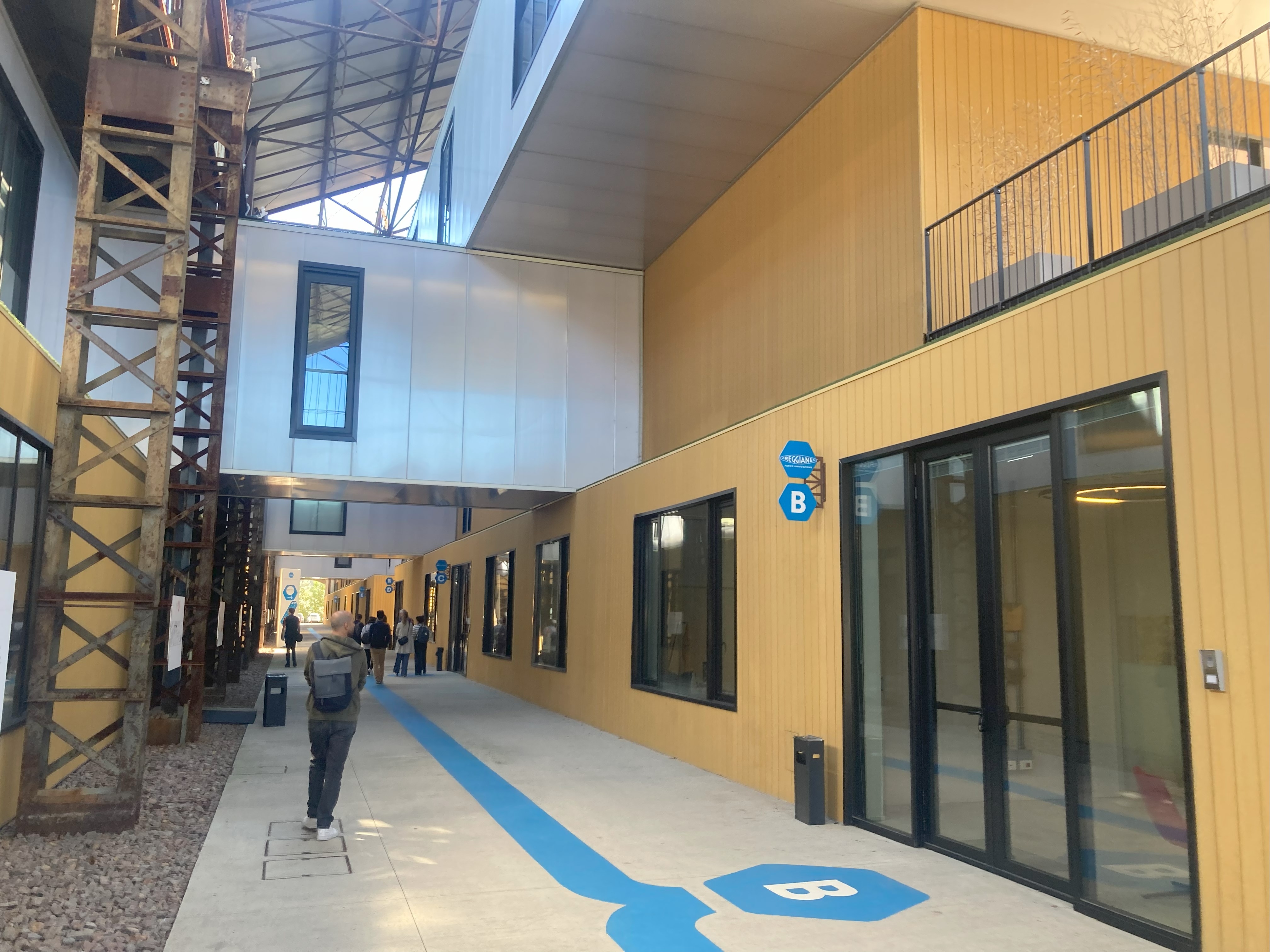
The process started in 2010 in response to the prevailing economic crisis. Buildings have been imaginatively converted into workspace for small firms, an Innovation Hub, and is being promoted as a Technopole. Community facilities include a skateboard park. The University of Reggio Emilia and Modena is already a major occupant in a fine new building within the structure of one of the old.
The plan is about half complete with 125,000m2 already renovated. The project is led by a public private joint venture, which include community architects. The development area joins up with a major industrial estate around a station designed by Calatrava on the new High-Speed Line between Bologna, Milan and Rome. The largest employer now is the ready to wear fashion firm Max Mara, which is consolidating all its factories there.
The immediate area to the South of the station is made up of municipal blocks of flats, which now largely house immigrants from Africa.
The roots of cooperation
As long ago as the 17th century local government gave a voice to the common people in the region of Emilia-Romagna. The nature of farming the flat fertile lands encouraged cooperation, and higher wages led to investment in machinery and local manufacture. The Apennine hills in the South of the province of Reggio Emilia was the home of the Partisan movement, whose extensive archives are treasured. This was the foundation of the Italian Communist Party after the war.
The values of cooperation are encouraged from nursery school onwards and extend through to technical schools. The Reggio Emilia approach is world famous for being child-centred, in which educators are seen as facilitators. The heritage is valued, and a federal approach was set out in the Ventotene Manifesto by Altiero Spinelli and Ernesto Rossi, whose concept of a Free Europe led on the Council of Europe and later the European Community. The process of citizen participation is fostered by the local authority supporting some 30 Casa di Quartiere in the different neighbourhoods. Six are now supported by trained Welfare Community Managers. Community centres are provided by the municipality with premises rent free. Contracts are awarded to bids that combine a business base, such as a cafe, with the provision of services for local people such as the elderly or mothers with young children.
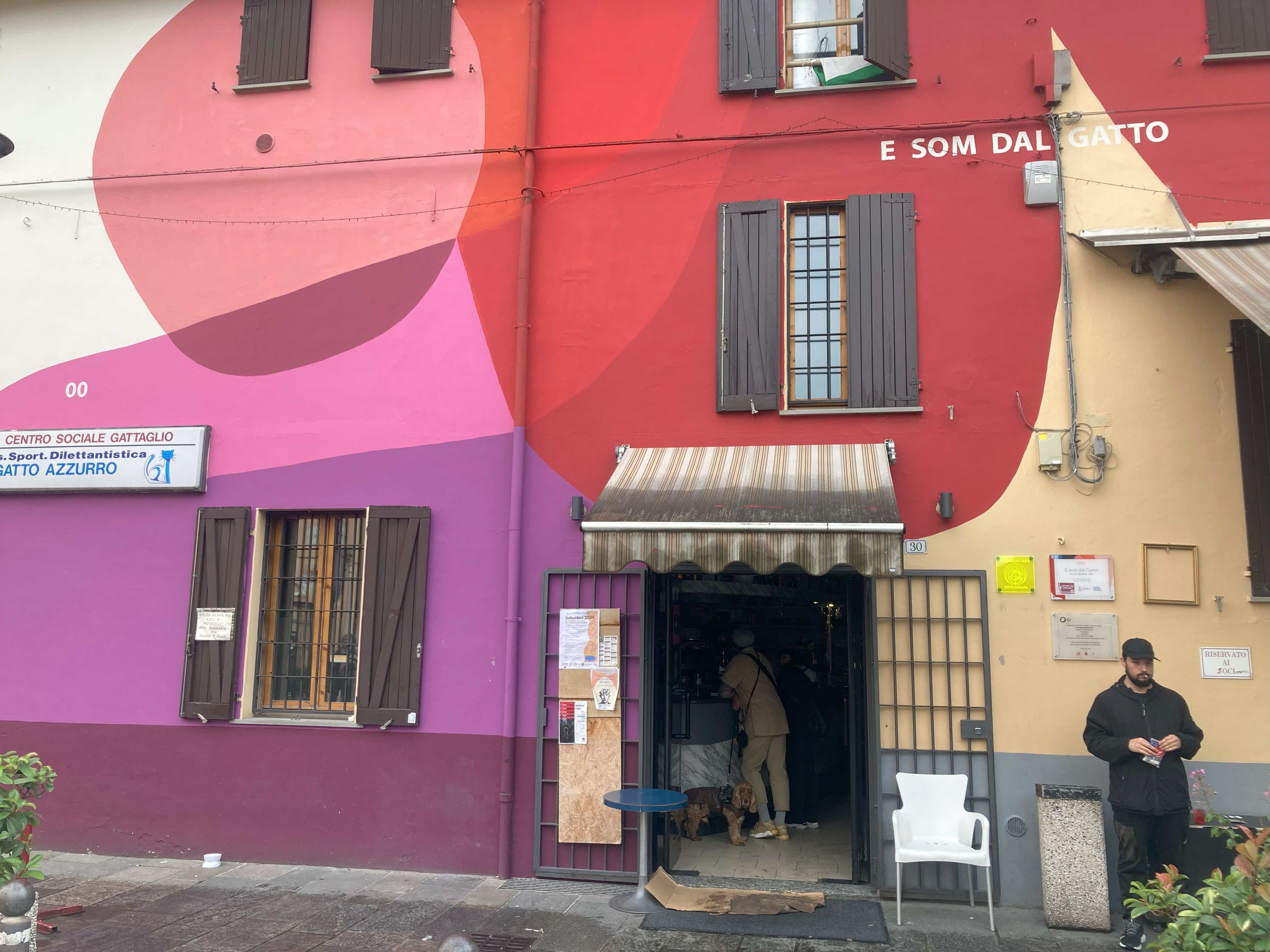
High levels of wellbeing
Reggio Emilia is very much a ‘green city’, with some 120 green spaces as well as tree-lined streets. Experiments with tackling climate change include holding on to water when it rains. Umbrellas of trees help keep temperatures down in Summer. The health authority believes that interaction with natures is a ‘gamechanger for mental health’.
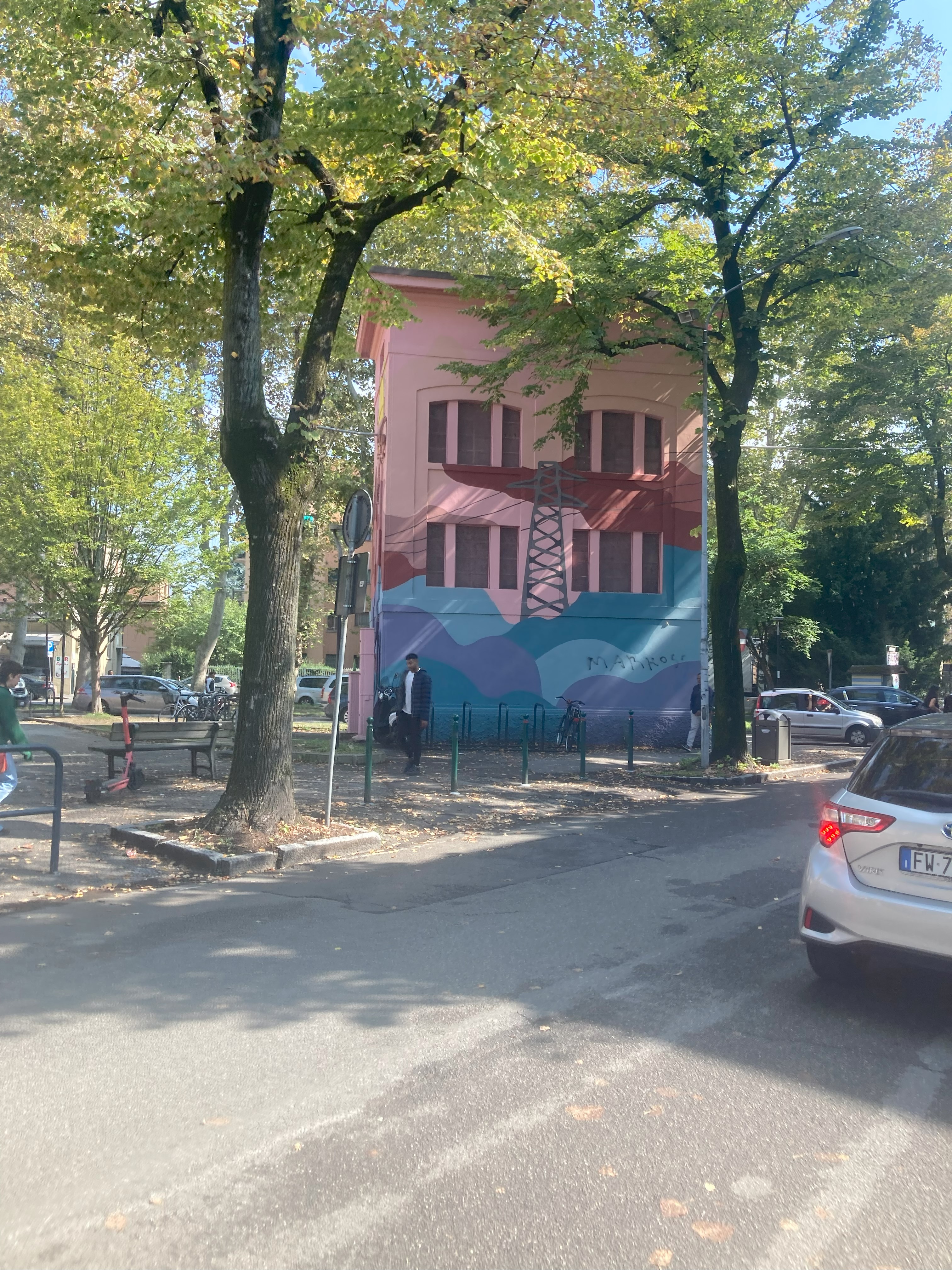
There is strong involvement of the local community and volunteers in promoting ‘wellness’, Temporary uses are encouraged through Neighbourhood Laboratories. Life expectancy for men is now 81 years and for women 86, a year or more longer than in the Southeast of England. Educational levels account for three years of difference.
Super connectivity
The whole urban area is very walkable, and well-signed with an extensive system of information posts with QR codes providing further information on a building’s history.
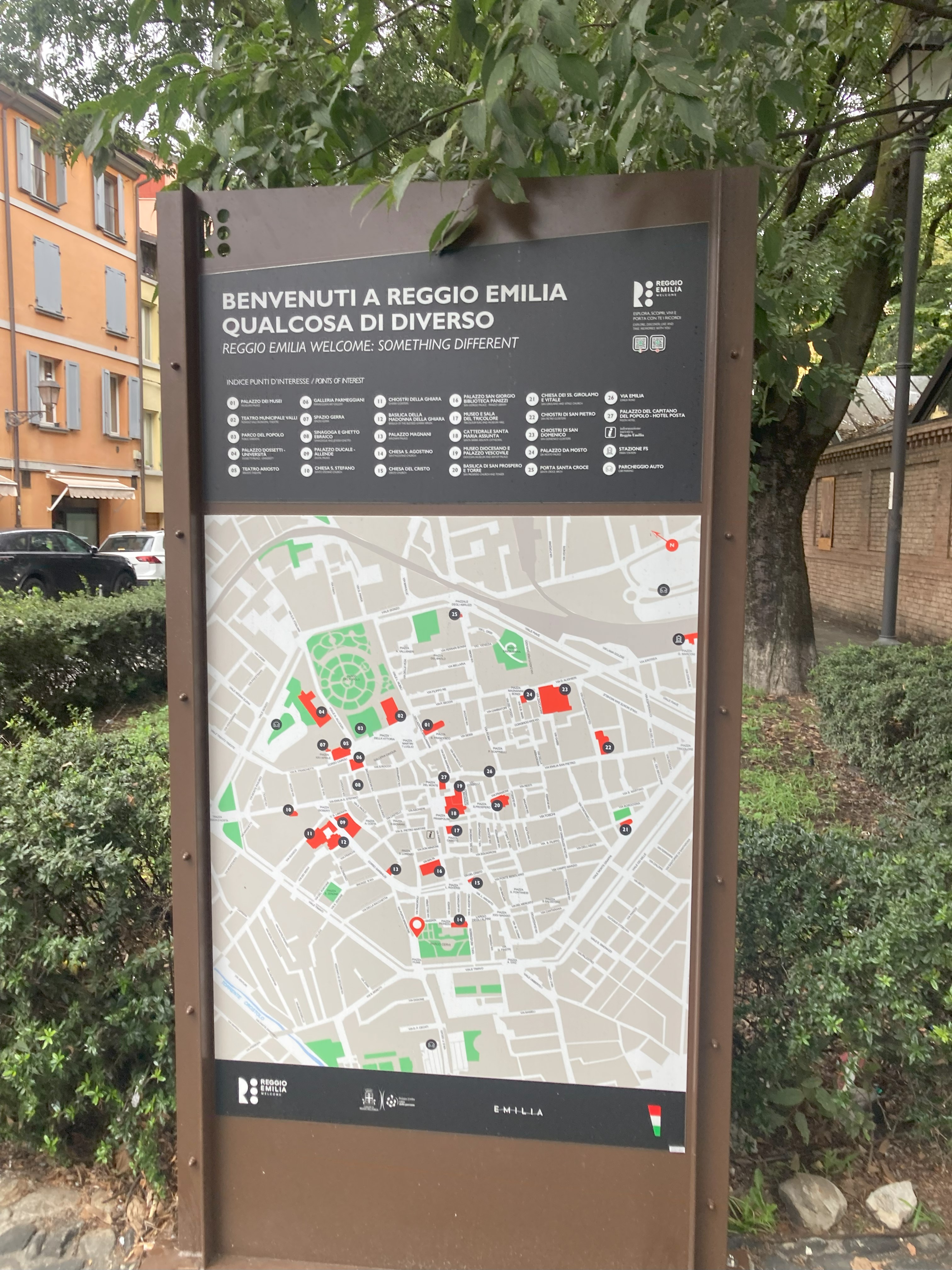
The city enjoys frequent cheap regional trains to neighbouring Parma, Modena and Bologna, as well as one of the few high speed train stations in Northern Italy. It costs £6 to go a distance of 37 miles. There is also an extensive bus network using ‘ecological’ or low-polluting buses.
By concentrating vehicles on an orbital route where the city walls one ran, the streets are given over to people. The network of cycle land is one of the most extensive in Italy. The idea of a ‘city without barriers, is promoted through a centre called La Polveriera which provides ‘a place of urban regeneration and redevelopment of cultural assets.’ It includes the K-Lab where new products are designed. Stylish information boards throughout the city centre provide a mass of information in English, and help the visitor find their way around.
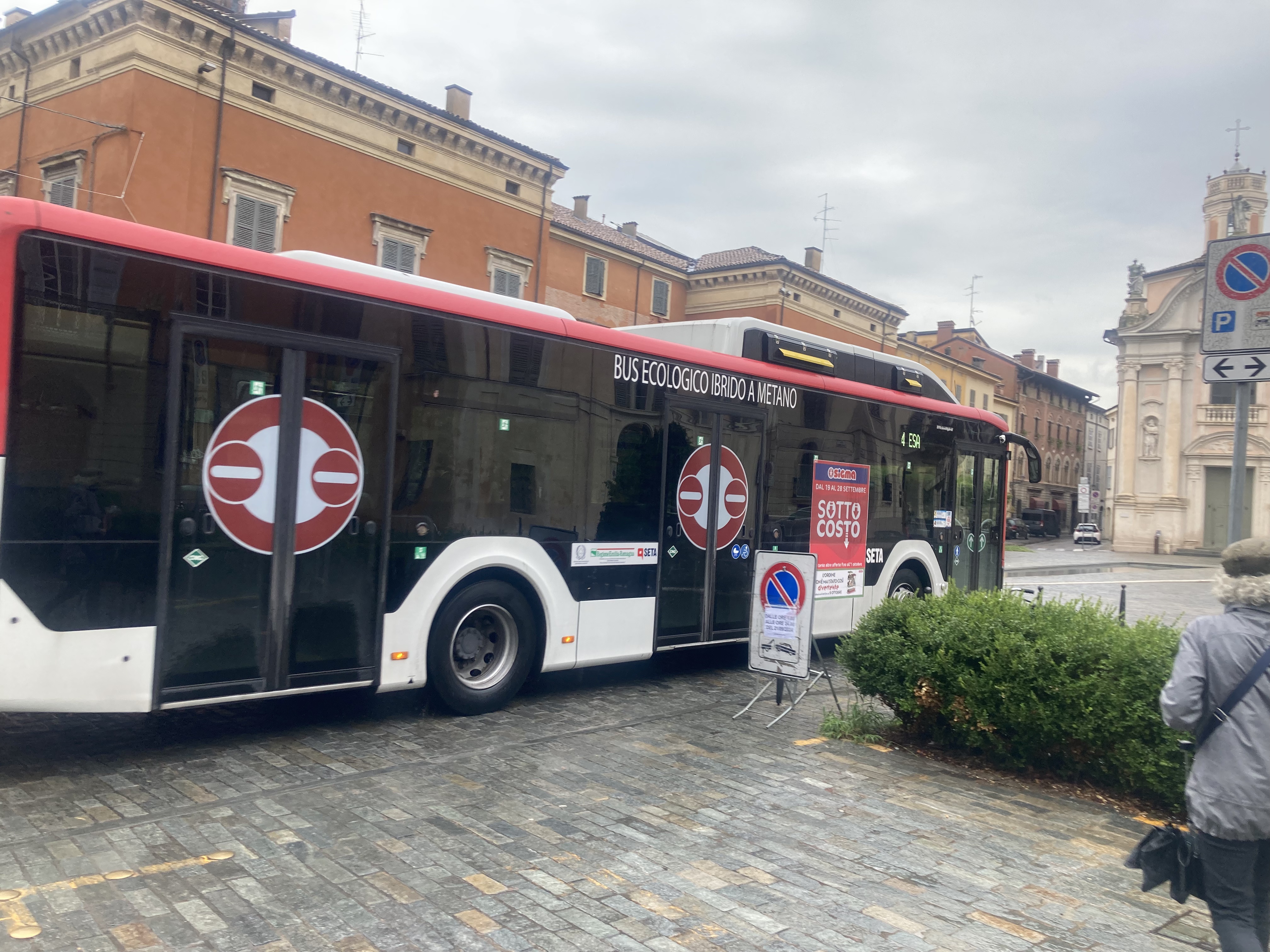
Participative governance
The federal approach, which has enabled Northern Italy to thrive despite often shambolic governments, is supported by foundations that bring the main stakeholders together. One of the most important is E35, the Foundation for International Projects. This was set up up in 1935 as a ‘shared project among organisations representing the Reggio Emilia territory and its different component: the municipality of Reggio Emilia, the province of Reggio Emilia, the Fondazione Cassa di Risparmio Pietro Manodori, the Reggio Emilia Chamber of Commerce, and the CRPA. In total there are over 400 stakeholders of which 96 are third sector or not for profit organisations.
E35’s mission is to foster international relationships and partnerships. There are six areas of work: new generations; welfare and social innovation; sustainability; innovation for development; internationalisation; international cooperation and human rights. It supports the UN Sustainable Development Goals and a new European identity that is ‘smarter, greener, more connected, more social, and closer to its citizens.’ Between 2015 and 2021 it undertook 92 projects of which 61 are ongoing and had an impact on the territory of over E21 millions.
E35 sees itself primarily as a ‘facilitator,’ and for example has developed several projects with Eurotowns, a network of medium-sized European cities with 50-250,000 inhabitants. But it also works on projects with cities in the Global South, such as India and Mozambique. Europe Direct Desk disseminates information throughout the region as part of the European Erasmus programme.
Nicholas Falk
12/02/2024

Nicholas – it sounds like Utopia! What is the bad news?